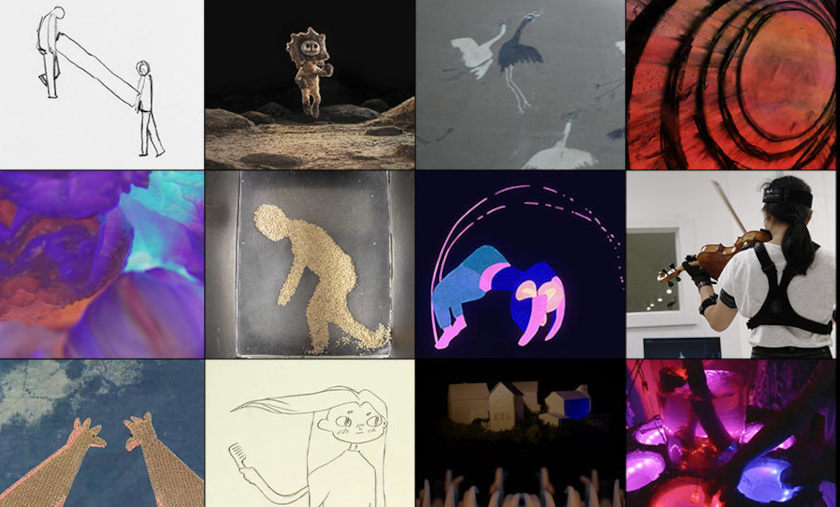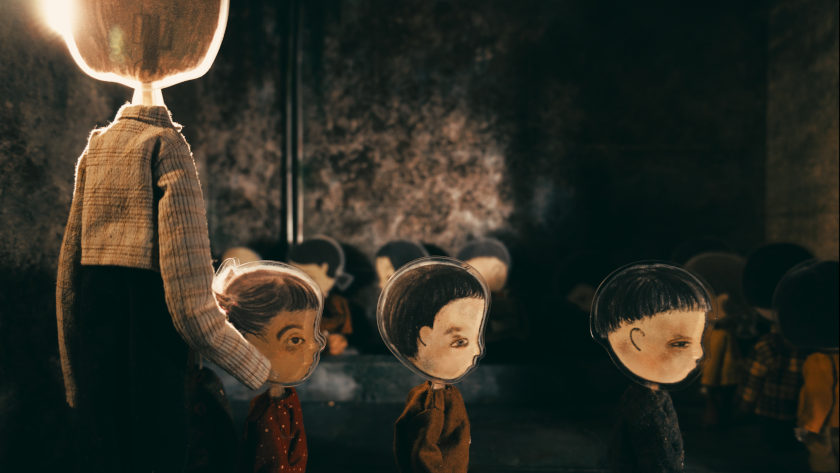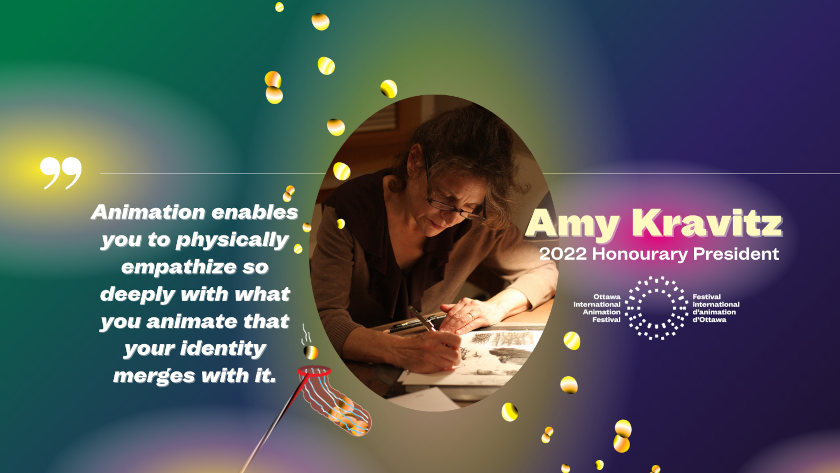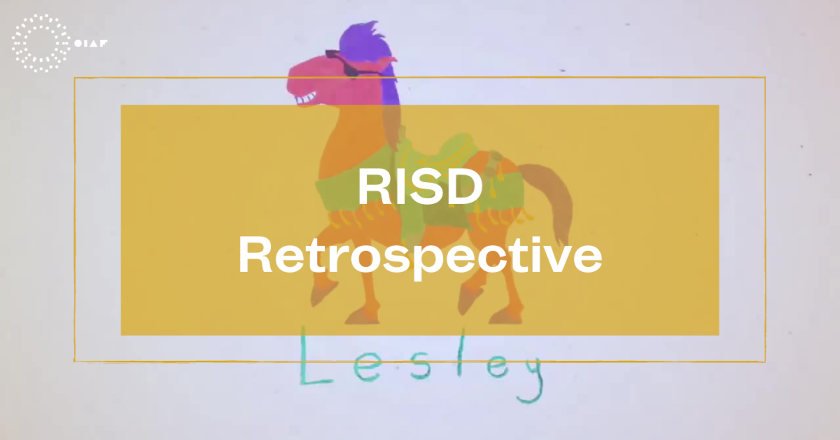Interview with Natasha Sharpe
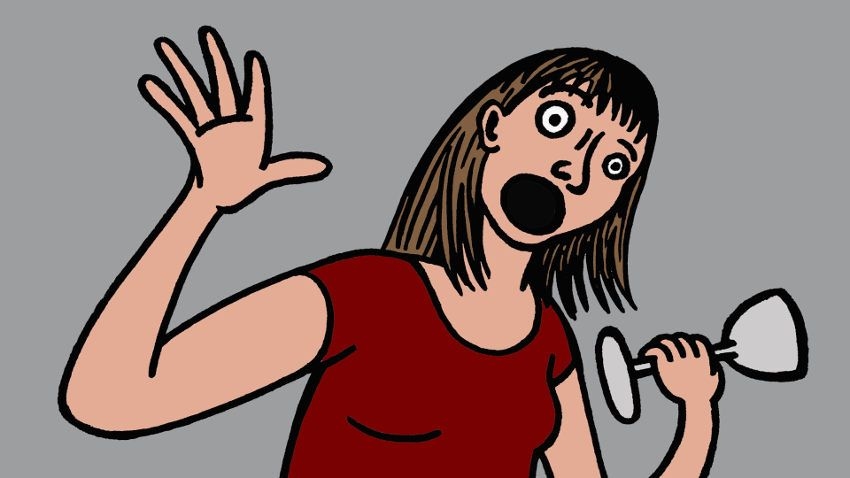
Natasha Sharpe is an artist and filmmaker from the San Francisco Bay Area, currently based in New York. Julia Ritter caught up with her during the Austrian Youki International Youth Media Festival 2019.
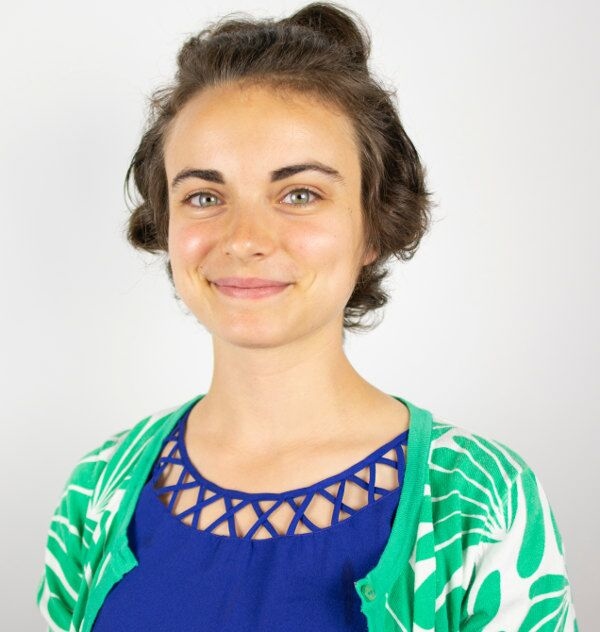
ZF: Is it your first time at Youki Festival?
NS: I came here last year.
ZF: Which of your films was screened last year? Someone mentioned to me that it was about ants.
NS: Yes, the film last year was an adventure film about a piece of an instrument that goes missing. Then the team of the band have to go find the missing piece and they encounter some ants which are played by me.
ZF: So it was partly live action?
NS: It was a mix of animation techniques and some live action, kind of a collage. There was drawings, clay, paper and footage. I wanted to put everything at once.
ZF: How did you choose when to use live action and different animation techniques?
NS: I started by making a storyboard, so I would know the entire story. Then I wanted to have the freedom to just change technique whenever I got bored of one, because I knew that it was going to be a long project. In the past when I had chosen to do only drawing or only clay, I ended up being so frustrated and bored with the medium by the end that I just wished I had done something else. So I thought, if I set it up this way, I can just have a solid story and change the look whenever I want to, without losing the plot.
ZF: I imagine that is quite difficult. Did you adapt the medium to the story or the story to the medium in any way?
NS: It helped me come up with some ideas to think about the materials I wanted to use, because different materials lend themselves to different actions. I knew that if something was morphing, clay was nice to use. One of the characters, I wanted it to have a real object as its head and a drawn body. So I used a walnut as the head, because it fit under the camera well and you can animate it and then add on the body. So, that helped me to think of ideas, just deciding what materials would be fun to work with.
ZF: Did you have to change the setup of the camera every time you changed materials?
NS: For all of the shooting I used a downward-facing camera. So when I was doing stop-motion, I would just lay the object flat and turn it as needed.
ZF: Your film that was screened at Youki Festival today was Catherine in Venice. Lots of people in the audience responded very well to it. It think that’s because of its sense of humour and its dynamic and flow. Can you talk about how the film came about?
NS: I was in a documentary-making class. In order to practise using the sound equipment in the class, we needed to record a practice interview with somebody who we were comfortable with. So I did this practice interview with my friend. The story which I used in the film came out as her response to something I had asked. I liked it a lot, so I thought, I will save this and use it sometime in the future. When it was her birthday, I thought this would make a good present, to make her a cartoon of herself.
ZF: I loved the combination of sound and image and that you played with irony. For example, when the character speaks about the city of Bath and we see the image of a bathtub. Do you often put jokes like these in, or is just something that comes to you in the process?
NS: I like to put in jokes to keep myself entertained and hopefully also someone else. I don’t have pressure to come up with something good, but usually if something is stupid or silly, then I like it and I’ll put it in. So I guess, a stupid idea is more inspiring to me than a profound one.
ZF: When we talked yesterday, you said that you were a bit surprised that this film was selected for Youki Festival, because it was a very quick project, while others took more time. How do explain that? What do you think is important in a film?
NS: I guess there’s something to be said for immediacy and an expression of something you don’t overthink. You can just get it out and the imperfections are appealing, because they make it more human.
ZF: Did you think a lot about the pace of your movie or was that dictated by the pace of the sound recording you were using?
NS: When you’re editing the images and you already have the sound pre-recorded, it’s really nice, because the sound determines so many of these things for you. You don’t have to wonder, is this too long, is this too short? You already have a structure to go on and so that’s a really nice part about starting with music or an interview. Also, you know exactly how long the film will be and you know how long it will take to make. If you’re just telling a story, it can get really out of control.
ZF: You can also play with the recording and create an ironic effect with the images you add. It’s not just about illustrating what is said, but it’s like a joke between image and text.
NS: Yes, that’s something that I’ve heard about being an illustrator, that you should try to bring more to your work than just creating a visual that matches the text in a 1:1 way. There should be a reason why there’s an image and why it’s not just words by itself. So, I think that can be intimidating when you’re wondering, what can I possibly add to this? But I think in some moments, it’s also important to give the audience a break to catch up by just giving them a 1:1 and then, the moments when you do deviate will have more punch to them, and people will be more ready to follow you.
ZF: It’s interesting that you connect your work to illustration. Do you have training as an illustrator?
NS: I have training as an animator, but illustration in my opinion is hand in hand with animation, if you’re doing a drawn style animation, because it’s very connected as visual storytelling. Different animators work in their own way, but I see it as very connected.
ZF: Do you think animators have a different approach if they come from illustration or from live action filmmaking?
NS: Yes, definitely. I mean at the end of the day, the difference between animation and illustration is that the one is time-based and the other is static. In that way, having a knowledge of filmmaking is really helpful. Watching and being inspired by live action films as well gives you a lot of ideas about how pacing and editing can be used to sculpt a story. I guess in the nature of animation is that you do all your editing beforehand, because you just can’t afford to make things you don’t use. You’ll end up throwing away a few things, but in general it just takes so long to create anything that it’s best if you have your idea pretty locked in beforehand. Whereas I guess in live action, the most time-consuming part is the editing. It’s easy to shoot tons and tons of footage, but then you have to create a story. I’m grateful to have had experience in both mediums and gotten to learn a lot from seeing that exchange.
ZF: I guess that’s also one of the things that makes animation so difficult, the fact that you have to know everything in advance. Have you ever made the experience of creating something that just didn’t turn out the way you wanted it to be?
NS: Definitely. Maybe your impulse is to do all of your drawings in one step, then you put it into a video timeline to see how it’s flowing, and then you think of sound as a whole extra step afterwards. But I’ve found that it’s much easier to have an idea of how the film is shaping out, if you are always putting it in the video timeline and always putting sound to it and always experimenting with that. Because then you’re seeing it grow as a film, which is what it’s going to be in the end, as opposed to seeing drawings and then seeing something different, just seeing parts without the whole.
ZF: That seems like a control mechanism to keep track of your story. What is your general process?
NS: It depends. It’s great to start out with a piece of sound if possible, because, like I said before, that gives so much shape to the timing. But sometimes, I will just think about one shot that I really want to see and then think, what can I create around that shot to create a story? I’ve had projects where, a lot of the time, I don’t know what the full thing will be. I just start with one shot and then consider: What is the next step or the response, the reaction to what exists now? Kind of continuing to do that, until eventually there are just these pieces. Then it’s a matter of building bridges between them, so that they have some sort of flow, logic or structure. In animation this is really open, because people are quite accepting of much more abstract things, as long as they feel like they’re being guided and cared for by some element of it, whether it’s the sound, the colour or reoccurring imagery. A story is only one form of structure, I guess.
ZF: The story of Catherine in Venice is also just a kind of micro-narrative, but it works very well, because we know this types of storytelling. There’s this element of intimacy and recognition, because we think that this could be our friend telling us a story. So even though the images are very intense and collide with the text, we feel guided through the film by this narrative. Just as a quick outlook on the future, what are you working on right now or what would you like to work on?
NS: I have a sibling who is studying evolutionary biology and who is very into science. They have created these power-point presentations for their classes about how biological sex is not the same as gender and trying to explain that from a scientist’s perspective. So, I think that message is very important for people to understand, not only socially, but also scientifically. Often science is used as an excuse for homophobia or transphobia or stereotypes about different types of people. I want to use one of these presentations as a basis for animation. Right now they are just power-points and I think that if they have some visual engagement to them, it would speak to a broader audience. It could also help me when I encounter people who don’t understand these topics to have something as a resource to show them to get them to expand their understanding.
ZF: That’s a great idea, using animation for educational purposes. People seem much more open to something if it’s entertaining and engaging them in some way. Do you think that you would like to do more projects with a social, political purpose?
NS: Yes, definitely. It’s something I’ve been trying to steer my work towards, because what comes naturally is to do something very silly, just pure entertainment. But there are so many topics that I feel like, as an artist, you have some opportunity to promote something you care about. So, it’s nice to take advantage of that, but I’m trying to find a way to it that feels natural and not like I’m forcing it to happen. So, I’m looking for ways in.
Contributed by: Julia Ritter
About Natasha Sharpe
Natasha Sharpe is an artist and filmmaker from the San Francisco Bay Area, currently based in New York. After graduating from the Rhode Island School of Design's Film/Animation/Video program in 2017, she has been working as an arts educator and freelance animator/illustrator, as well as creating personal comics and short films. She likes using cartoonish imagery and narratives to unearth humor from the millions of tiny social and personal abrasions inevitable in a sensitive life. Using a playful slant, the process of narrativizing individual experience and distilling it down to an absurdly simple form is therapeutic both for the artist and perhaps the audience as well. She'd like you to see yourself and your experience with kindness, and be laughing.
About Julia Ritter
Julia Ritter is a writer and journalist from Austria, currently based in Vienna. She fell in love with animation, when trying her hand at stop-motion animation for the first time. She's interested in how animators work, where their inspiration comes from and how they approach their work. Julia studied English and Theatre, Film and Media Studies in Vienna and is currently working in television. On her blog she writes about film, travel, literature and writing.




